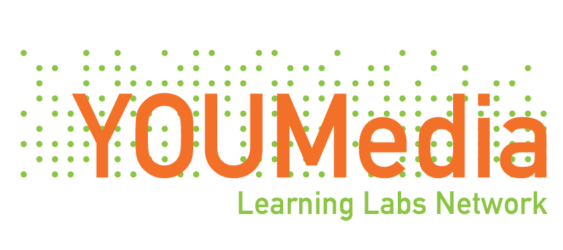By Amalia Kalisz Tonsor Of The Labs @ Carnegie Library of Pittsburgh
The Labs at Carnegie Library of Pittsburgh were originally designed around a drop-in framework. As we evolved, became integrated in library locations, and built a consistent youth attendance, we identified a problem: if the hanging out and messing around are on lock, how can we design in-depth programs and projects to support deeper dives into skill building and content creation?
In Pittsburgh, our learning lab programs were originally designed around a drop-in framework of weekly workshops in specific media technologies, coupled with open studio hours hosting guided access and individualized project support from Labs Mentors. As we have evolved, our staffing model from Mentors acting as rotating teaching artists to serving as embedded staff members at one branch, our relationships with young people and the context of each site have been able to evolve and deepen. As The Labs resources and philosophies have become better integrated with the youth, services, staff and spaces at most of our embedded sites, our one-off workshop model has become somewhat obsolete. In most locations, teen regulars have become at home in their access to the equipment and feel a sense of ownership over the space. With gains in support and buy-in from other Library staff, many days at the Library function as open studio days even without the presence of a Labs mentor. The “post-emergent” development of relationships has opened up both the possibility and the need for more in-depth programming and projects in response to youth interests and specific opportunities at each location. If the hanging out and messing around are on lock, how can we make room to support deeper dives into skill building and content creation?
Labs Mentors gather input and take cues from students about long-term projects they would like to do. This has looked like supporting teens in planning and hosting a Library non-traditional Olympics, teen-curated art exhibits, the establishment of a weekly pop-up recording studio at one site, ongoing programs around the installation and creative use of an official recording booth at another, Teen regulars teaching and facilitating various creative classes and clubs, and a youth-led collaborative mural project in one of our Teen spaces.
In a large, urban library system, we also have the opportunity to collaborate with the events and programs of Teen Services more broadly, and often work in branches where there are other teen-serving staff members. One way we have created more long-form programming has been through collaborating with library staff and programs outside of The Labs in order to design in-depth programs that build on and enrich other Teen Services events and projects at our locations. Some examples include collaborative program series during Labs time focused on the design and production of the annual Haunted Library event at CLP – East Liberty or creating costumes for the CONtact teen comicon at CLP – Main.
In the summer of 2016, we developed stipended, structured, week-long summer programs around specific themes that required students to apply and commit in advance and included paid Teen Mentors as co-facilitators. These programs highlighted mentor expertise or brought in community partners to provide deeper dives into specific subject areas, including photojournalism, sewing and fashion design, game design, music production, bike mechanics, songwriting, painting, and street art. These programs made focused, consistent space and time to learn more advanced skills and develop creative and collaborative content. In matching youth interests and identities with artist educators who could share and support their experiences and goals, we also attempted to bridge some of the gaps in the diversity of the Library’s staff and their skills in order to connect teens with relevant mentorship and role-modeling.
As our programs gain permanence and are integrated into teens’ experiences at the Library, we are more capable of building connections between casual relationships and in-depth learning. Through project-based programs that respond to their skills and interests, we see students deepening their social engagement at the library and using the library as a resource in new ways. Teens’ deepened participation has culminated in exhibits, showcases, and the forging of new learning pathways that connect our programs with learning opportunities beyond the library.
In this phase of our program growth, the dispositional shift toward connected learning that we strive to support for students is not only a process for youth, but also for our institutions and staff.
As we recognize the importance of deep relationships for deep learning, the central question is how to continue this engagement during the school year, both through structured, media-specific programs we create in-house, and through continued collaboration with partner programs. Most importantly, how can we lift up the leadership of the students who have deepened their skills this summer, and integrate them into the continuing structures we create?
Related resources:


